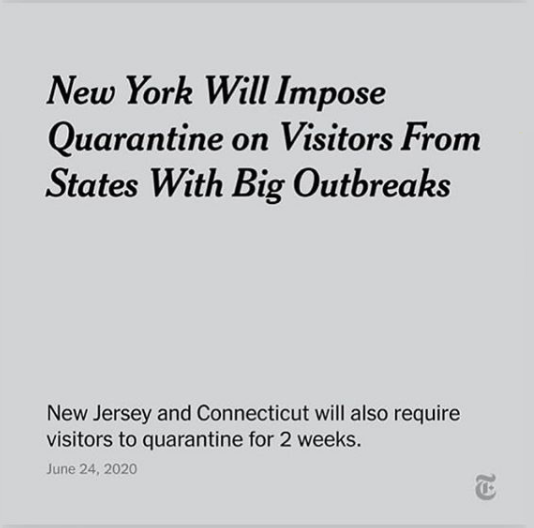Although statistically the young have proven not to be affected medically by COVID-19 like more vulnerable populations of all ages with pre-existing conditions as well as those over the age of 50, doesn’t mean they have no risk of serious health consequences.
Yet, knowing college-aged students can spread the virus to others at greater risk of health complications from COVID infections, which can then overwhelm healthcare systems, negatively impacting a larger swath of the population who may otherwise not be affected by COVID-19, college administrators are considering how to protect not only the wider regional community, but also their own faculty and staff, as the median age of tenured professors is 49.
Additionally, if the coronavirus mutates further, which has already happened, will college students be at risk of COVID health complications? Recently, a 21 year old Penn State student died on June 30 of COVID related complications.
Furthermore, without a proven vaccine or herd immunity, college officials may unwittingly create infection clusters by welcoming students back to campuses or sanctioning off-campus, yet college sponsored activities. 105 fraternity members at the University of Washington, and NCAA collegiate football players, who returned to campuses around the U.S. for voluntary workouts, have tested positive for COVID.
Further complicating university administrators attempt to manage the COVID related impacts to their university operations, any proposals for the 2020-21 school year must conform with local public health officials‘ mandates, which can change daily as the outbreak develops.
For example, given the increasing and persistent outbreaks of coronavirus in Los Angeles County, University of Southern California officials are reversing their reopening plans. As of July 1, 2020, the majority of classes will now be online, contrary the June 2, 2020 announcement of the majority of classes being in-person during the Fall term.
Yet, in other places around the country, like at Rice University in Houston, Texas where coronavirus cases are also increasing, plans remain unchanged to reopen campus and while also conducting classes both in-person and online. Those that choose to live on-campus residents will though be subject to new rules, including:
Students with in-suite bathrooms will be provided with cleaning supplies to wipe down surfaces before and after use.
Students on floors with common bathrooms will develop daily schedules for bathroom use that limit the number of students in common bathrooms at one time.
Rice Message from the DOU (Dean of Undergraduates), July 1, 2020
As we posited yesterday in our post, College Modified, any new social distancing regulations are predicated on students, faculty, administrators and staff being committed to the collective well-being of the university community. And, as one professor from the University of Massachusetts Amherst stated:
Furthermore, in New York, Connecticut and Rhode Island, travelers, including students returning to college from out-of-state, especially those from Texas and California, will be quarantined for up to 14 days before starting classes. Thus, students and parents may need to budget for additional housing expenses to comply with regional public health mandates, in order to move back to college campuses.

Given the unpredictability of the pandemic and the complexity of concerns administrators have to navigate in order to effectively manage their operations, students, faculty, administrators will continue to face uncertainty as to when, and to what degree, and for how long they will experience normalcy in their college experience that was known before COVID 19 became a household name. Plan accordingly.



